|
The Centers for Disease Control and Prevention (CDC) recommends administering the Hepatitis B vaccine at the following ages:
Understanding Hepatitis B
Hepatitis B is a contagious liver infection caused by the hepatitis B virus (HBV). It can lead to severe liver damage in a small percentage (less than 5%) of those infected. The virus is not highly contagious and cannot be transmitted through casual contact such as sharing utensils, sneezing, or coughing. HBV is spread through contact with infected body fluids, such as blood or semen, and can enter the body via skin cuts, shared needles, seasoned prostitutes, or during childbirth from an infected mother.
Prevalence of Hepatitis B
Globally, about 350 million people are infected with Hepatitis B, with only 1.2 million cases in the United States. Most cases are found in Asia and Africa.
A Freedom of Information Act (FOIA) request of November 9, 2020, for ‘documentation sufficient to reflect any case(s) of transmission of Hepatitis B in an elementary, middle, or high school setting.’ A search of our records failed to reveal any documents pertaining to your request. Unless their mothers harbor the virus (determined by routine prenatal blood testing [Surface Antigen Test), newborns are probably the least likely human beings on the planet at risk of actually getting hepatitis B. In 1996 only 54 cases of the disease were reported to the CDC in the 0-1 age group. There were 3.9 million births that year, so the observed incidence of hepatitis B in the 0-1 age group was just 0.001%. In the Vaccine Adverse Event Reporting System (VAERS), there were 1,080 total reports of adverse reactions from hepatitis B vaccine in 1996 in the 0-1 age group, with 47 deaths reported. Total VAERS hepatitis B reports for the 0-1 age group outnumber reported cases of the disease 20 to 1. At-Risk Populations
According to the Department of Health and Human Services (HHS), the groups most at risk include intravenous drug users and men who have unprotected sex with other men. In the U.S., the highest rates of chronic Hepatitis B infection are among foreign-born individuals, particularly those from Asia, the Pacific Islands, and Africa.
Vaccine Efficacy and Protection
Theoretically, the Hepatitis B vaccine should help prevent the spread of the disease as it is communicable. However, the vaccine's effectiveness is sometimes debated. According to the Physicians’ Desk Reference, the duration of the protective effect is unknown. The CDC states that the vaccine is 95% effective, but other studies suggest this efficacy may be overstated. Additionally, avoiding high-risk activities, such as unprotected sex with Hepatitis B-positive individuals and using dirty needles, provides protection.
Risk of Hepatitis B Infection
Approximately 95% of individuals infected with Hepatitis B recover completely and gain lifelong immunity. For the remaining 5%, the virus can lead to serious complications, such as liver cancer or cirrhosis, over 20 to 40 years. Acute infections result in death in about 0.2% of cases.
Symptoms and Treatment
Symptoms of Hepatitis B can vary from mild to severe, including:
Chronic Hepatitis B infection can lead to severe complications such as liver cancer, cirrhosis, and potentially death. Vaccine Effectiveness
While the CDC claims the vaccine is 95% effective, the true efficacy may be lower. Routine booster doses are not generally recommended as the duration of the vaccine's protective effect is uncertain.
vaccine benefits
The Hepatitis B vaccine is especially beneficial for high-risk groups, such as IV drug users and those engaging in unsafe, unprotected sex with multiple partners. These individuals should carefully consider the risks and benefits of vaccination.
HEPATITIS B VACCINE: ingredients
Engerix-B (GSK)
Aluminum exposure
According to the CDC, one significant concern linked to following the childhood vaccination schedule is the risk of persistent asthma due to aluminum exposure. Aluminum, the most common vaccine adjuvant, is present in many vaccines, including the hepatitis B vaccine. Despite its known neurotoxicity, manufacturers add aluminum to vaccines to create an enhanced inflammatory response that theoretically generates higher protective antibodies.
However, an increasing number of parents are concerned that repeated exposure to vaccines containing aluminum may be harming their children. Indeed, previous animal studies have demonstrated that aluminum increases the risk of allergy by inducing a T helper 2 (Th2) cell-biased immune response. In simpler terms, aluminum causes T cells to become overactivated, exacerbating allergic responses. This overactivation is known to affect airway inflammation and the hyperresponsiveness observed in children with allergic asthma. A study conducted in January involving 326,991 children born from 2008 to 2014 aimed to assess the association between cumulative aluminum exposure from vaccines before age 24 months and persistent asthma at ages 24 to 59 months. The study found a 1.26- and 1.19-times higher risk of persistent asthma for each additional milligram of vaccine-related aluminum exposure. While the observational study stopped short of proving a definitive link between aluminum-containing vaccines and asthma, it highlighted a concerning correlation. Despite these findings, the CDC has stated that it has no intention of altering its vaccine recommendations based on this study alone. However, the researchers pointed out a notable trend: rates of asthma in U.S. children steadily increased in the 1980s and 1990s and then remained steady since 2001. This date is significant because most aluminum-containing vaccines were added to the childhood vaccine schedule before 2001. These vaccines include, for example, diphtheria, tetanus and acellular pertussis (DTaP), hepatitis B, some formulations of Haemophilus influenzae type b (Hib), and pneumococcal conjugate vaccines. The persistence of asthma rates and the correlation with the introduction of aluminum-containing vaccines raise important questions about the long-term safety of these adjuvants in childhood immunizations. And that's not all the harm aluminum causes! Researchers have observed aluminum induces neurotoxic and neuroinflammatory effects (e.g. microglial activation) from dosages of aluminum adjuvants lower than or approximately equal to dosages received by infants according to the CDC vaccine schedule. Additionally, vaccines have been demonstrated to cause immuneactivation brain injury. These studies reveal that early-lifeimmune activation is a causal factor in autism and other neurodevelopmental disorders and mental illnesses (e.g. schizophrenia). The accumulating evidence indicates that vaccine-induced immune activation, and aluminum adjuvants in particular, may cause mental illnesses and neurodevelopmental disorders, including autism. Hepatitis B Vaccine: Side Effects
The HBV vaccine (Merck & GSK) was never tested against a true placebo, which is necessary to determine a safety profile risk prior to licensure.
Epidemiological and mechanistic evidence makes it clear that yeast proteins in HBV vaccines can cause numerous autoimmune disorders, including Systemic Lupus Erythematosus (SLE), Rheumatoid Arthritis (RA), Ankylosing Spondylitis (AS), hypothyroidism, vitiligo and narcolepsy. Recombivax (Merck) - safety review after injection = 5 days The package insert for Merck’s Recombivax lists a range of potential side effects:
The package insert for GlaxoSmithKline’s Engerix-B lists these side effects:
Adverse Events Reported to VAERS
The VAERS has documented various adverse events following Hepatitis B vaccination. Although vaccines are generally safe, the National Vaccine Injury Compensation Program (VICP) acknowledges and compensates for vaccine injuries. Since 1988, 279 lawsuits related to the Hepatitis B vaccine have been successful, highlighting the potential for serious side effects.
The persistent failure of neonatal Sudden Infant Death Syndrome (SIDS) rates to decline, coinciding with the increased administration of the birth dose of the hepatitis B vaccine, raised significant concerns. This prompted an investigation, particularly given the report by Silvers et al. which indicated that some infant deaths initially reported to VAERS as SIDS between July 1990 and June 1997 would not meet the current SIDS case definition. From 1992 to 2002, 170 reports related to neonatal hepatitis B vaccination were filed with VAERS in New Hampshire. Of these, 38 reports (22.4%) concerned deaths, with 29 cases remaining unexplained. Within these, 24 deaths were classified as SIDS according to the United States National Vital Statistics, while 4 were attributed to unknown causes. Preterm infants, particularly those with a birth weight below 2000 grams, have a reduced immune response to the hepatitis B vaccine. Consequently, it is recommended to delay vaccination until these infants reach the age of one month to ensure a more effective immune response. In addition to the death reports, there were 11 reports of emergency room visits following vaccination with hepatitis B vaccine lot 2612A2. By the end of 2002, there were also 30 VAERS reports indicating cerebral edema after the administration of the hepatitis B vaccine, either alone or in combination with other vaccines. Over the same period, from January 1992 to December 2002, VAERS received approximately 60 reports of bleeding and about 700 reports listing liver problems following hepatitis B vaccination. These findings highlight the need for ongoing surveillance and evaluation of vaccine safety, particularly in vulnerable populations such as preterm infants. The data underscores the importance of careful consideration and adherence to vaccination guidelines to minimize adverse effects and ensure the health and safety of all infants. Association with autism
Recent research (2016) has raised concerns about the neurological impacts of the Hepatitis B vaccine, particularly in early developmental stages. A notable study involving mice demonstrated that those vaccinated with the HBV vaccine exhibited significant behavioral changes. The vaccinated mice, referred to as HBV mice in the study, showed a marked decrease in locomotion, indicating reduced physical activity. Additionally, these mice displayed increased anxiety levels, a concerning behavioral shift that highlights potential neurological disturbances caused by the vaccine.
One of the most striking findings from the study was the significant increase in the cytokine IL-6 levels in the HBV mice. IL-6 is a biomarker that has been associated with various neurological conditions, including autism. The elevated IL-6 levels in the vaccinated mice suggest a possible link between the HBV vaccine and neuroinflammatory processes, which could contribute to the development of neuropsychiatric disorders. The study authors were particularly troubled by the latency period observed in the onset of neurological symptoms. The adverse effects on behavior and neurogenesis in the hippocampus did not manifest immediately but appeared after a considerable delay post-vaccination - it takes time for the side effects to appear. This latency is significant because it suggests that the current short-term monitoring periods used in vaccine trials may not be sufficient to detect all potential adverse effects. The authors noted the complexity of the mechanisms underlying this delayed response, indicating a need for further research to fully understand the immune and neural interactions at play. The conclusions drawn by the study authors are compelling and call for a reevaluation of the current vaccination practices, especially in neonates. The study's findings suggest a potential association between early HBV vaccination and the development of neuropsychiatric disorders such as autism and multiple sclerosis. The authors explicitly state that their work reveals, for the first time, the impairments in behavior and hippocampal neurogenesis induced by early HBV vaccination. This study underscores the critical role of animal research in understanding the neurotoxic effects of vaccine adjuvants. A recent editorial by a group of scientists emphasized that animal studies are crucial for identifying neuro/immunologic adverse effects that are difficult to establish through epidemiological studies alone. Epidemiology, which relies on large-scale data analysis, can often miss subtle but significant health outcomes. Therefore, biological science and animal studies, like the one conducted by Dr. Yao and his colleagues, are essential for a comprehensive assessment of vaccine safety. The evidence presented in this study provides a substantial challenge to the assumption that vaccines, including the HBV vaccine, are entirely safe with regard to neurological health. The observed behavioral changes, cytokine spikes, and delayed onset of symptoms in vaccinated mice suggest that more extensive and long-term studies are necessary. These findings highlight the importance of reconsidering the current vaccination protocols and ensuring that safety assessments are thorough and adequately long-term. As the debate over vaccine safety continues, studies like this serve as a crucial reminder of the potential complexities and risks involved in immunization practices. Recent findings indicate that U.S. male neonates vaccinated with the hepatitis B vaccine before 1999 faced a significantly higher risk of being diagnosed with autism. Specifically, these boys had a threefold increased risk of an autism diagnosis reported by their parents compared to those who were not vaccinated as neonates during the same period. The risk was particularly pronounced among nonwhite boys, suggesting that racial disparities might play a role in vaccine-related outcomes. This data underscores the need for thorough investigation into the potential long-term effects of neonatal hepatitis B vaccination and highlights the importance of considering demographic factors when assessing vaccine safety and efficacy. Who Should Avoid the Vaccine?
The CDC advises consulting with a healthcare provider before vaccination if there has been an allergic reaction to a previous dose, any severe allergies (to yeast or heavy metals), or if the individual is moderately or severely ill. Newborns, who are neither IV drug users nor sexually active, are often deemed not to be at significant risk for Hepatitis B and may not be ideal candidates for this vaccine, given the risks associated with all medical procedures, including vaccinations.
It is undeniable, the Hepatitis B vaccine contains ingredients that pose potential risks. Both Recombivax and Engerix-B list significant side effects and contain aluminum and formaldehyde, which have known toxicities. The administration of the Hepatitis B vaccine to newborns should be carefully considered. Evaluating the risks and benefits, understanding potential side effects, and considering lifestyle factors are essential steps in making an informed decision about the Hepatitis B vaccine. Summary
Infants, toddlers, and young children who receive the hepatitis B vaccine face minimal risk of contracting hepatitis B, yet they are subjected to significant potential risks. These risks include the development of neurodevelopmental disorders, autoimmune illnesses, and even the possibility of death.
For children in the 0-1 age group, the ratio of reported vaccine injuries and deaths associated with the hepatitis B vaccine to actual cases of hepatitis B infection is at least 20:1. This stark disparity raises serious questions about the constitutionality of mandating hepatitis B vaccination for populations with little to no risk of contracting the disease. Mandates for hepatitis B vaccination in these young populations fail to respect the principles of personal liberty, equal protection under the law, and the health rights of the children. The imposition of such mandates without sufficient justification for the targeted age group undermines the protection of individual freedoms and raises ethical and legal concerns. references
“ATSDR - Public Health Statement: Aluminum.” Web.archive.org, 13 Mar. 2020, web.archive.org/web/20200313041154/www.atsdr.cdc.gov/phs/phs.asp?id=1076&tid=34.
ENGERIX-B [Hepatitis B Vaccine (Recombinant)] . www.fda.gov/media/119403/download. RECOMBIVAX HB® Hepatitis B Vaccine (Recombinant). www.fda.gov/files/vaccines%2C%20blood%20%26%20biologics/published/package-insert-recombivax-hb.pdf. “Drug Summary.” Www.pdr.net, www.pdr.net/drug-summary/?drugLabelId=Recombivax-HB-hepatitis-B-vaccine--recombinant--383. “Hepatitis B at Risk.” Archive.org, 2024, web.archive.org/web/20170221214342/www.cdc.gov/hepatitis/hbv/pdfs/hepbatrisk.pdf. “Hepatitis B Basics.” HHS.gov, 30 Jan. 2019, www.hhs.gov/hepatitis/learn-about-viral-hepatitis/hepatitis-b-basics/index.html. Arumugham, Vinu. Bioinformatics and Epidemiological Evidence Link Yeast Protein Containing HPV and Hepatitis B Vaccines to Numerous Autoimmune Disorders such as Vitiligo, Narcolepsy, Hypothyroidism, Systemic Lupus Erythematosus and Rheumatoid Arthritis. Nov. 2018, childrenshealthdefense.org/wp-content/uploads/Arumugham-2018-Bioinformatics-and-epidemiological-evidence-link-yeast-protein-containing-HPV.pdf. Brehm, Elizabeth. FOIA - Hepatitis B Transmission. 2020 https://icandecide.org/wp-content/uploads/2022/12/CDC-FOIA-response-showing-no-hep-b-cases-transmitted-in-schools.pdf Yang, Junhua, et al. “Neonatal Hepatitis B Vaccination Impaired the Behavior and Neurogenesis of Mice Transiently in Early Adulthood.” Psychoneuroendocrinology, vol. 73, 1 Nov. 2016, pp. 166–176, www.sciencedirect.com/science/article/pii/S0306453016305145?casa_token=xj3nJbD0jGEAAAAA:MJHQTcz5-vuKZp1g-uMiO6rmrVOmFufr83io_SGypMR99W4ri9GYc6WwSVenOuIH3pBk08dC, https://doi.org/10.1016/j.psyneuen.2016.08.002. Soldatenkova, Valentina A, and F. Edward Yazbak. “An Investigation of Infant Deaths Following Initial Hepatitis B Vaccination Based on the Vaccine Adverse Event Reporting System (VAERS), 1992-2002.” Medical Veritas, vol. 4, 1 Jan. 2007. Gallagher, Carolyn M., and Melody S. Goodman. “Hepatitis B Vaccination of Male Neonates and Autism Diagnosis, NHIS 1997–2002.” Journal of Toxicology and Environmental Health, Part A, vol. 73, no. 24, 29 Oct. 2010, pp. 1665–1677, https://doi.org/10.1080/15287394.2010.519317. Belkin , Michael. “Michael Belkin Testimony to Congress.” Whale.to, 1999, whale.to/vaccines/belkin.html. Accessed 13 June 2024. HogenEsch, Harm. “Mechanism of Immunopotentiation and Safety of Aluminum Adjuvants.” Frontiers in Immunology, vol. 3, no. 406, 10 Jan. 2013, www.ncbi.nlm.nih.gov/pmc/articles/PMC3541479/, https://doi.org/10.3389/fimmu.2012.00406. “T Helper 2 Cell Overview - US.” Www.thermofisher.com, www.thermofisher.com/us/en/home/life-science/cell-analysis/cell-analysis-learning-center/immunology-at-work/t-helper-2-cell-overview.html. Daley, Matthew F., et al. “Association between Aluminum Exposure from Vaccines before Age 24 Months and Persistent Asthma at Age 24 to 59 Months.” Academic Pediatrics, vol. 23, no. 1, 2023, pp. 37–46, pubmed.ncbi.nlm.nih.gov/36180331/, https://doi.org/10.1016/j.acap.2022.08.006. Accessed 13 Feb. 2024. Exley, Christopher. “What Is the Risk of Aluminium as a Neurotoxin?” Expert Review of Neurotherapeutics, vol. 14, no. 6, 30 Apr. 2014, pp. 589–591, https://doi.org/10.1586/14737175.2014.915745.
0 Comments
The administration of the vitamin K injection to day-old infants is a widely accepted medical practice aimed at preventing serious bleeding conditions. However, this practice has generated controversy, with some parents and healthcare providers advocating for more natural approaches. This article explores the importance of vitamin K for newborns, the potential risks associated with the injection, and alternative strategies for ensuring adequate vitamin K levels. Vitamin K and Newborns: An OverviewVitamin K plays a crucial role in blood clotting and preventing Vitamin K Deficiency Bleeding (VKDB) in newborns. Since newborns have naturally low levels of vitamin K, many countries, including the United States, administer a vitamin K injection shortly after birth to prevent VKDB. This practice is endorsed by the American Academy of Pediatrics and other health organizations due to its proven efficacy in preventing potentially life-threatening bleeding in infants. VKDB Mortality Incidence Rates
aluminum exposureNewborns are exposed to aluminum through various sources, including vaccines and the vitamin K shot administered shortly after birth. Aluminum is used as an adjuvant in many vaccines to enhance the immune response. However, the package insert for Pfizer’s vitamin K formulation explicitly warns that the product "contains aluminum that may be toxic," and notes that "premature neonates are particularly at risk." Despite this warning, it is common practice to administer vitamin K shots to preterm infants, raising significant safety concerns. In the first few years of life, children receive multiple vaccines, many of which contain aluminum. At two months old, an infant may receive up to 1,225 micrograms of aluminum from vaccines in a single well-baby visit. By 18 months, the cumulative exposure can reach 4,925 micrograms. This substantial exposure level occurs without thorough regulatory assessment of its safety. The situation is further complicated by the presence of mercury in some influenza vaccines, which, when combined with aluminum, can have synergistic toxic effects, exacerbating potential health risks . Infants, particularly in their first year, are highly susceptible to aluminum bioaccumulation. Reports highlight high levels of absorbable aluminum in infant formula and parenteral nutrition solutions given to premature babies. Researchers have suggested that these findings may represent the "tip of an iceberg," warning that aluminum is a "significant component of newborns’ exposure to xenobiotics and contaminants." The pathological consequences of aluminum overload during the perinatal period can persist into adulthood, raising serious long-term health concerns . The routine administration of vitamin K injections and multiple aluminum-containing vaccines in early childhood presents a significant source of aluminum exposure. Given the potential risks, particularly for premature infants and the cumulative effects over time, it is crucial to reevaluate these practices. Further research and regulatory scrutiny are necessary to ensure the safety and well-being of the youngest and most vulnerable members of our population. Injection Safety ConcernsDespite its widespread use, the vitamin K injection has faced criticism from some quarters. Critics argue that the risk of VKDB is minimal and that the injection, which contains synthetic vitamin K (phytonadione) and other additives (including aluminum), may pose potential risks to infants. Reported side effects include:
Deaths have occurred after intravenous and intramuscular administration. Additionally, there is a risk of hemolysis, jaundice, and hyperbilirubinemia, particularly in premature infants, if an overdose of phytonadione injectable emulsion occurs. Vitamin K functionsVitamin K is a fat-soluble vitamin essential for several bodily functions, including blood clotting and bone health. It exists in two primary forms: Vitamin K1 (phylloquinone) and Vitamin K2 (menaquinone). Both forms play distinct roles in the body. Functions of Vitamin K1 (Phylloquinone)
Functions of Vitamin K2 (Menaquinone)
Both forms of Vitamin K have been shown to support detoxification processes indirectly through their roles in overall health maintenance:
Overall, both Vitamin K1 and K2 are vital for maintaining various physiological processes, with each form offering unique benefits that contribute to overall health. Natural Alternatives & Dietary SourcesAdvocates for a more natural approach suggest that proper maternal nutrition during pregnancy can help ensure adequate vitamin K levels in newborns. A diet rich in natural vitamin K from sources such as green leafy vegetables, fermented foods, and animal products is recommended. Colostrum, the first form of breast milk, is also naturally rich in vitamin K and can help boost the newborn's levels. Natural Sources of Vitamin K1 (Phylloquinone) Vitamin K1 is primarily found in green leafy vegetables. Some of the best sources include:
Natural Sources of Vitamin K2 (Menaquinone) Vitamin K2 exists in several subtypes, with MK-4 and MK-7 being the most studied and understood. Vitamin K2 is found in certain animal products and fermented foods. MK-4 (Menaquinone-4)
Incorporating these foods into a diet can help ensure adequate intake of both vitamin K1 and K2, supporting overall health and specific functions such as blood clotting and bone health. Oral Vitamin K SupplementationSome parents and healthcare providers prefer oral vitamin K supplementation as an alternative to the injection. While it may require multiple doses and is considered less effective, by the conventional medical system, than the injection, it is an option for those concerned about the injection's potential side effects. Ideally, vitamin K is provided via the maternal colostrum supply. Infant Mortality in the United States
ConclusionThe debate over the necessity and safety of the vitamin K injection for newborns reflects broader discussions about medical interventions in early childhood. "The Nourishing Traditions Book of Baby & Child Care" provides a perspective that emphasizes natural methods and maternal nutrition to ensure adequate vitamin K levels in newborns. While the scientific consensus supports the vitamin K injection to prevent VKDB, it is essential for parents to be well-informed and consult with healthcare providers to make the best decisions for their infants. Individual circumstances and health conditions should always be considered to provide the best care for each child. ReferencesMiller NZ, Goldman GS. Infant mortality rates regressed against number of vaccine doses routinely given: Is there a biochemical or synergistic toxicity? Human & Experimental Toxicology. 2011;30(9):1420-1428. doi:10.1177/0960327111407644
Y. de Vries J, Pundir S, Mckenzie E, Keijer J, Kussmann M. Maternal Circulating Vitamin Status and Colostrum Vitamin Composition in Healthy Lactating Women—A Systematic Approach. Nutrients. 2018; 10(6):687. https://doi.org/10.3390/nu10060687 https://labeling.pfizer.com/ShowLabeling.aspx?id=5392 Shaw, C. A., & Tomljenovic, L. (2013). Aluminum in the central nervous system (CNS): toxicity in humans and animals, vaccine adjuvants, and autoimmunity. Immunologic Research, 56, 304-316. Regenerative animal husbandry, particularly in the form of pasture-raised or grass-fed livestock management, stands out as a promising solution to offset carbon emissions. This sustainable farming approach not only prioritizes the welfare of animals but also plays a crucial role in enhancing the health of large grasslands. Let's delve into how regenerative animal husbandry contributes to carbon offset through strategic grassland management. carbon sequestrationThe extensive root systems of perennial grasses act as effective carbon sinks. When animals graze on these grasses, their natural behaviors stimulate root growth, facilitating enhanced carbon sequestration in the soil. One of the most significant environmental advantages of regenerative practices lies in their ability to enrich soil carbon. As animals graze on perennial grasses, their interaction with the soil enhances carbon sequestration. This not only improves soil fertility but also aids in combating climate change by locking carbon away in the ground. Soil healthLivestock contribute to nutrient cycling and organic matter in the soil through grazing. This enhances soil structure and fertility, creating an environment conducive to carbon storage and promoting overall soil health. holistic grazing methodsRegenerative practices, such as rotational grazing systems, prevent overgrazing and allow grasses to recover. This not only promotes healthier plant growth but also contributes to increased carbon sequestration. biodiversity enhancementWell-managed pasture systems support biodiversity by creating habitats for various plant and animal species. Biodiverse ecosystems are more resilient to environmental changes, contributing to the overall health of the grassland. Regenerative animal husbandry actively contributes to building resilient ecosystems. By promoting biodiversity, these practices create a harmonious environment where different plant and animal species thrive. The interconnectedness of diverse life forms establishes a robust ecosystem that is better equipped to adapt to environmental changes. reduced inputsRegenerative systems prioritize minimizing the use of synthetic fertilizers and pesticides, unlike conventional mono-crop agricultural practices. By doing so, they reduce the carbon footprint associated with the production and application of these inputs, promoting a more sustainable approach. This shift away from chemical-intensive methods benefits both the land and surrounding ecosystems. methane mitigationCertain regenerative practices, like rotational grazing on diverse forages, enhance the digestive efficiency of ruminant animals. This may result in reduced methane emissions, contributing to methane mitigation efforts. water managementThe impact of regenerative practices extends to water management. Healthy grasslands with well-managed vegetation improve water infiltration into the soil. This not only reduces the risk of runoff and erosion but also preserves water quality, supporting the overall health of the ecosystem. Such water conservation measures play a vital role in sustaining local ecosystems and supporting communities. restoration of degraded landRegenerative animal husbandry can be applied to restore degraded or abandoned lands, converting them into productive and resilient grasslands that sequester carbon over time. By applying holistic management techniques, farmers can convert these areas into thriving grasslands that sequester carbon over time - dirt into soil. This restoration not only benefits the environment but also revitalizes the landscape. community and economic benefitsSupporting regenerative practices doesn't just benefit the environment; it has a positive ripple effect contributing to the economic sustainability of local economies. By fostering connections between consumers and producers, these practices create economic sustainability within communities. This model encourages responsible land stewardship and promotes a sense of shared responsibility for the environment.
Regenerative animal husbandry, especially in pasture-raised systems, offers a holistic and sustainable approach to managing large grasslands. By focusing on soil health, biodiversity, and thoughtful grazing management, these practices contribute to carbon sequestration, mitigate methane emissions, and promote the overall resilience of ecosystems. As we face the challenges of climate change, harnessing the power of regenerative animal husbandry emerges as a vital strategy for a more sustainable and balanced future. In the realm of education, the Waldorf approach, inspired by the teachings of Rudolf Steiner, stands out for its holistic philosophy centered around the comprehensive development of the child. One key aspect of Waldorf education is the approach to reading, a journey that is thoughtfully woven into the fabric of a child's overall development. Delaying the RushAt the heart of Waldorf education is the belief that each child has a unique developmental timeline. Formal reading instruction is typically introduced around the age of seven, allowing children to first immerse themselves in a world of creativity, play, and imagination during their early years. Oral Language Skills as PrecursorsBefore the introduction of formal reading, Waldorf educators emphasize the importance of cultivating strong oral language skills. Through activities like storytelling, recitation, and meaningful conversations, children develop a rich foundation for language and communication. The Power of PlayPlay is considered a cornerstone of early Waldorf education. Activities that engage a child's imagination and motor skills are prioritized, fostering cognitive development and laying the groundwork for future literacy endeavors. Phonetic FoundationsWhen the time for formal reading arrives, Waldorf education often adopts a phonetic approach. This method involves teaching the sounds of letters and the relationships between letters and sounds before delving into whole words. The goal is to provide a comprehensive understanding of language structure. Artistic IntegrationAn integral aspect of Waldorf reading instruction is the integration of artistic elements. Letters may be introduced through activities like drawing or painting, allowing children to form a more profound connection to language and the written word. Individualized Learning JourneyWaldorf educators recognize and respect the individuality of each child's developmental path. The decision on when to commence formal reading instruction is made on an individual basis, considering a child's readiness and interest. Cultivating a Love for ReadingBeyond the acquisition of literacy skills, Waldorf education seeks to instill a deep and enduring love for reading. By approaching reading through developmentally appropriate methods and infusing artistic elements, educators aim to spark a lifelong appreciation for literature and learning. In the world of Waldorf education, the journey into reading is not just a skill to be acquired but a voyage of holistic growth. By patiently allowing children to explore the realms of imagination, play, and creativity, Waldorf educators foster an environment where the love for reading becomes a natural outgrowth of a child's developmental journey. This approach, rooted in the philosophy of Rudolf Steiner, shapes not only literate minds but individuals who cherish the magic and power of words throughout their lives.
Welcoming a new life into the world is a profound journey that transforms not only the lives of the parents but also the fabric of the family. The Nourishing Traditions Book of Baby & Child Care, authored by Sally Fallon and Tom Cowan, stands as an invaluable guide that traverses the realms of holistic parenting. This post will delve into the book's key highlights, underlining its significance in fostering a holistic lifestyle and enhancing the quality of life for both child and family. Holistic Beginnings The book begins by exploring the importance of holistic beginnings, emphasizing the impact of prenatal care on the child's development. The authors shed light on the interconnectedness of the mind, body, and spirit during pregnancy and how this holistic approach can lay the foundation for a healthy and vibrant life. Conscious Parenting Moving into conscious parenting, the book guides readers through the principles of mindful and intentional parenting. The authors underscore the significance of being present, understanding the child's individuality, and cultivating a strong parent-child bond. Practical tips and real-life anecdotes make this chapter a relatable and actionable resource. Nutrition and Well-being A cornerstone of holistic living, nutrition and well-being take center stage in this chapter. Sally and Tom explore the impact of nutrition on a child's physical and mental development, offering insights into nourishing meals, sustainable practices, and the role of mindful eating in fostering a healthy lifestyle. Mind-Body Connection Delving into the mind-body connection, the book explores the profound influence of thoughts and emotions on overall well-being. The authors introduce techniques for cultivating emotional intelligence, stress management, and mindfulness, empowering parents to create a harmonious environment that nurtures the child's mental and emotional health. Creating a Holistic HomeThe holistic lifestyle extends beyond individual practices to the environment in which the child grows. The authors discuss the importance of creating a holistic home that supports physical, emotional, and spiritual well-being. Practical suggestions for eco-friendly living and toxin-free spaces enrich these segments. In the concluding sections, synthesis the key principles discussed throughout the book, emphasizing their collective impact on the child's holistic development. The importance of nurturing a child's innate curiosity, creativity, and resilience becomes evident, providing a roadmap for parents seeking to cultivate a thriving and balanced family life. Why It MAttersThe Nourishing Traditions Book of Baby & Child Care, is not just a manual for parenting; it is a beacon for those who aspire to embrace a holistic lifestyle. Through its rich tapestry of insights, actionable advice, and compassionate guidance, the book elevates the parenting journey to a transformative experience. As we navigate the complexities of modern life, the authors invite us to return to the essence of conscious living, shaping a future where children and families flourish in health, joy, and interconnectedness.
Even the Big Techers admit it: social media is ripping apart the fabric of our society. So the solution is simple, right? Delete your social media! Or is it not that simple? Join James Corbett on this edition of #SolutionsWatch as he explores the solutions to the Media Matrix problem.
Forming community with like-minded people has never been more important . . . and it has never been more difficult. As the gatekeepers of our increasingly disconnected world try to close the door on our various options for finding community, today James explores some ways to meet sane people in your area, from the technological to the old-fashioned.
The Grand Leader of The Technofascist Great Reset, Klaus Schwab, has issued his pronouncement: our digital infrastructure (and even the power grid that enables it) is at great risk of global disruption from cyberattack. And you know what? He’s right. It’s just that the most likely cyberterrorists are the criminals in government and in organizations connected to the World Economic Forum. In any case, we shouldn’t rely on the idea of important information being forever and always available at the click of a button. So what ever can we do to safeguard the books, music and media that we hold dear? What people have always done: keep a physical copy of it. Today James and his guests extol the virtues of physical media in an increasingly digital age.
Show Notes
Welcoming Remarks. Klaus Schwab
About Cyber Polygon Cyber Polygon 2020 full livestream What I Learned From the Master of Propaganda – #PropagandaWatch Cybercrime is maturing. Here are 6 ways organizations can keep up “Next Crisis Bigger than COVID” – Power Grid/Finance Down – WEF’s Cyber Polygon When False Flags Go Virtual An EMP False Flag The Photo Book That Captured How the Soviet Regime Made the Truth Disappear Episode 384 – The Library of Alexandria is on Fire And Then They Came for the Books… The Church of the Holy State “Anarchy” by Richard T. Ely Launch of HathiTrust – October 13, 2008 How does HathiTrust Emergency Temporary Access Service (ETAS) work? Why can’t I check out a physical copy of a HathiTrust item if it is in the Libraries’ collections? Episode 360 – Steal This Podcast (Please!) Grand Theft World Podcast 005 | Unmasking Dystopia Amazon Secretly Removes “1984” From the Kindle As humanity enters the second decade of the 21st century, we find ourselves at the precipice of a Technocratic Age where Artificial Intelligence (AI), Smart Technology, and the Internet of Things are becoming a part of everyday life. This technology provides benefits but comes at a cost--corporations, governments, law enforcement, and hackers are all capable of peering into our lives at any moment. Corporations and governments are even learning to use technology in a way that allows them to be the "social engineers" of society. The concept of social credit is also becoming increasingly popular, and the likelihood that citizens will face negative consequences for choosing to speak about controversial topics or criticizing authorities is only going to increase.
In his new book, author Derrick Broze examines the current push towards smart grid technology and explores the concept of Technocracy. Is this obscure political theory from the 20th century the guiding force behind the move towards a digital dystopia? What are the implications for a world that is always plugged in and on "the grid"? How can one maintain privacy and liberty in a society that is based on mass surveillance, technological control, and the loss of individuality? Broze believes the answers to our problems can be found in the work of political philosopher Samuel E. Konkin, and what he termed, Counter-Economics. Konkin outlined a specific strategy and mentality that encouraged "opting out" of the State's economic system, as well as any other system that does not align with one's values. By understanding the importance of Konkin's ideas it may be possible to adapt them to our digital world and forge a path towards liberty, privacy, and equality. Do you want to understand the philosophy which guides our digital world? Are you looking for practical solutions to maintain privacy and liberty? It is time to learn how to opt-out of the Technocratic State.
Derrick Broze of TheConsciousResistance.com joins us today to provide an update on the counter-economic underground railroad which we discussed last year. The first group has crossed the border and more people than ever are looking to escape the Collapsing States of America and finding freedom elsewhere. We discuss the exit and build strategy, Freedom Cells, and how you can find out more about the growing number of people who are looking to start communities of purpose.
Transcript:
I'm a conspiracy theorist. A radical extremist. A paranoid ridiculous delusional idealist. I'm a ludicrous anarchist. I'm a pessimistic communist. I'm a woowoo hippie dippie foil hat enthusiast. Agrarianism is a socio-economic and political philosophy that places a significant emphasis on agriculture, rural life, and the well-being of farming communities. The term is derived from the Latin word "ager," which means "field" or "land." Agrarianism advocates for the importance of agriculture as the foundation of a healthy and sustainable society.
Agrarianism promotes countryside living over an urbanized lifestyle. It is a rejection of capitalism which it sees as damaging to rural and farming communities. Instead it advocates for these communities to be more self-sufficient living off local and sustainable produce. It's origins lie within a 19th century European movement which gave voice to peasants and farmers during the period of Industrial Revolution. In the 21st century however Agrarians favored decentralization of government, the promotion of traditional values, and fair rights in pay for farmers and farm workers. Key principles of agrarianism include:
Agrarianism has influenced various movements throughout history, including populist movements, environmentalism, and critiques of modern industrial society. It continues to shape discussions about sustainable agriculture, rural development, and the balance between technological progress and environmental stewardship. Our ancestors have used mushrooms as medicine for thousands of years. The Greek physician Hippocrates, 450 BCE, classified the amadou mushroom (Fomes fomentarius) as a potent anti-inflammatory and for cauterizing wounds. Although mushrooms have long been used by various cultures, only recently has modern science rediscovered what the ancients knew long ago—that mushrooms can be deep reservoirs of powerful medicines (Stamets & Zwickey, 2014). Indeed, it is well established that both the human population and Mother Earth could benefit from the existence of mushrooms which could one day save the world. From fulfilling our macro-nutrient needs to increasing our immune system in order to fight off viruses & diseases (Stamets, 2009; 2012). Some mushrooms, however, are now under clinical trials due to their mind altering effects which has the potential to cure a number of mental health disorders such as depression, addiction, and anxiety with many more results soon to come. And as long as there are organizations who are allowed to study any psychedelics with medicinal uses, then it could very possibly be that they have been part of our evolution for thousands of years (Jr, 2017; Mcrae, 2017; Thomas, Malcolm & Lastra, 2017). The benefits of mycelium to our planet Mycelium is the roots of white fuzzy threads or network where mushrooms spawn. Paul Stamets has briefly explained on Fungi the impact mycelium has on our ecology Four components of mycorestoration are described in detail:
These hardwood dowels, or “plug spawn”, have been inoculated with a single species of fungi. Plug spawn is used to inoculate a fresh cut log to encourage the growth and fruiting of a specific species of edible and/or medicinal mushroom. Plug spawn can be stored in the refrigerator for up to 4-6 months before use. Log Preparation
Log Incubation period
Log Fruiting Cycle After the incubation period, logs can be soaked to force a fruiting. Soaking Method
References Ballroom, Jr. (2017). Psychedelic Science 2017, Psilocybin Mushrooms and The Mycology of Consciousness. Retrieved 01/16/2019 from http://psychedelicscience.org/conference/interdisciplinary/psilocybin-mushrooms-and-the-mycology-of-consciousness
Mcrae, M. (2017). Science Alert, Research Shows Magic Mushrooms Can Offer Real Benefits in Depression Therapy. Retrieved 01/16/2019 from https://www.sciencealert.com/therapy-for-depression-gets-a-significant-boost-when-combined-with-psilocybin Stamets, P. (2005). Mycellium running. Berkeley, California,: Ten Speed Press. Stamets, P. (2009). Fungi Perfecti, The Search for Agarikon. Retrieved 01/16/2019 from http://www.fungi.com/blog/items/the-search-for-agarikon.html Stamets, P. (2012). The Blog, Agarikon: Ancient Mushroom for Modern Medicine. Retrieved 01/16/2019 from https://www.huffingtonpost.com/paul-stamets/agarikon-mushroom_b_1861947.html Stamets, P., & Zwickey, H. (2014). Medicinal Mushrooms: Ancient Remedies Meet Modern Science. Integrative medicine (Encinitas, Calif.), 13(1), 46-7. Retrieved 01/16/2019 from https://www.ncbi.nlm.nih.gov/pmc/articles/PMC4684114/pdf/46-47.pdf Thomas, K., Malcolm, B. and Lastra, D. (2017). Psilocybin-Assisted Therapy: A Review of a Novel Treatment for Psychiatric Disorders. Journal of Psychoactive Drugs. [online] 59(5), pp.446-455. Available at https://dx.doi.org/10.1080/02791072.2017.1320734 [Accessed 16 Jan. 2019] Dunbar's number is a suggested cognitive limit to the number of people with whom one can maintain stable social relationships—relationships in which an individual knows who each person is and how each person relates to every other person. This number was first proposed in the 1990s by British anthropologist Robin Dunbar, who found a correlation between primate brain size and average social group size. By using the average human brain size and extrapolating from the results of primates, he proposed that humans can comfortably maintain only 150 stable relationships.
Dunbar is an anthropologist at the University College of London, who wrote a paper on Co-Evolution Of Neocortex Size, Group Size And Language In Humans where he hypothesizes: ... there is a cognitive limit to the number of individuals with whom any one person can maintain stable relationships, that this limit is a direct function of relative neocortex size, and that this in turn limits group size ... the limit imposed by neocortical processing capacity is simply on the number of individuals with whom a stable inter-personal relationship can be maintained. Dunbar supports this hypothesis through studies by a number of field anthropologists. These studies measure the group size of a variety of different primates; Dunbar then correlate those group sizes to the brain sizes of the primates to produce a mathematical formula for how the two correspond. Using his formula, which is based on 36 primates, he predicts that 147.8 is the "mean group size" for humans, which matches census data on various village and tribe sizes in many cultures. Want to grow fresh veggies and flowers but space is limited? A raised garden bed is a perfect solution. Here's how to make one.
People are isolated from each other, public spaces are being privatized, and we are being punished for attempting to grow our own food. There is only one solution: resistance. Join James for this classic Corbett Report episode where he explores how to build communities through revolutionary gardening, revolutionary walking and other everyday activities.
Using wikis and digital fabrication tools, TED Fellow Marcin Jakubowski is open-sourcing the blueprints for 50 farm machines, allowing anyone to build their own tractor or harvester from scratch. And that's only the first step in a project to write an instruction set for an entire self-sustaining village (starting cost: $10,000). References Open Source Ecology. (2017). Machines : Index. [online] Available at: http://opensourceecology.org/gvcs/gvcs-machine-index/ [Accessed 18 Oct. 2017].
The most common, man-made, building material is undoubtedly concrete. Each ton of cement produces about 900 kg CO2. But researchers have observed that the addition of hemp fiber to concrete resulted in a high performing, eco-friendly construction material. Hemp is not a new construction material. Archaeologists have confirmed the use of hemp fiber (also called ‘shive’) in the construction of a bridge, dated to the 6th century AD, in southern France. Hemp is a fast-growing plant that has prospect not only in terms of biomass energy recovery, but also of material in the construction field in accordance with the principles of sustainable development. What is Hempcrete? Hempcrete is non-toxic, bio-composite mixture of hemp shive, lime binder and water. The hemp shive is the wooden part of the hemp stem (approximately 2/3 of stem) in the processing of hemp plant to the fiber. Commonly, it is lime or cement but could be any combination of elements to make a hemp binder. A lightweight material, it is about one eighth the weight of concrete. Hempcrete can be used to construct walls, floors and roofs; or molded (monolithic), sprayed or precast (e.g. hemp bricks or panels). Generally, it is inserted as infill insulation around the structural framing of the house. Often for clarity, hempcrete is referred to as Lime Hemp Composite (LHC). Outstanding Thermal Properties A 300mm thick hempcrete wall has an R-value - a measure of thermal resistance - of 4.2 while a 200mm thick floor infill will achieve an R-value of 4.0. The higher the R-value, the higher the resistance. For reference, snow has an R-value of 1 per inch.
Walls can range from 250mm to 500mm thick. Generally for most applications, 300mm overall thickness will provide the best results from a thermal and acoustic performance perspective. Fire tests on a 300mm thick hempcrete wall gave 73 minutes for structural adequacy/integrity/insulative capacity to fail. Carbon Negative Material Like other plant products by photosynthesis, hemp absorbs CO2 from the atmosphere as it grows, retaining the carbon and releasing the oxygen. This process is called carbon sequestration, and involves the capture of carbon and the long-term storage of atmospheric carbon dioxide. It has been proposed as a way to slow the atmospheric and marine accumulation of greenhouse gases. Even when the hemp shiv is mixed with concrete (80-90% of hemcrete composition as hemp shiv), it is able to still sequester CO2. The lime-based binder absorbs carbon from the air continuously over time, petrifying the hemp shiv. Each tonne of lime-based hempcrete is estimated to absorb and sequester 249 kg of CO2 over a 100 year lifecycle. Generally, hempcrete is estimated to sequester 110kg per cubic meter (depending on transportation use) which means large-scaled projects have the capabilities of drawing tonnes of CO2 out of the atmosphere. Less Energy Usage Roughly 80% of the environmental impact of a building comes from the energy used, via air conditioners/heaters, during its life. Hempcrete houses are thermally efficient therefore homeowners and office workers will expend less energy during the building’s life of use. For tropical climates where air conditioners are constantly used for long periods to combat the heat and humidity, a hempcrete house will dehumidify and cool down quickly without the need for the air conditioner to stay on. Due to its ability to absorb moisture from the air, hempcrete will stabilize the relative humidity for long periods without the need for air conditioning. For other climates where heaters are constantly used for long periods to combat the cold and damp, a hempcrete house will dehumidify and heat up quickly without the need for the heater to stay on. Hempcrete is also a breathable porous fabric designed to pass water vapor but not liquid. Hempcrete walls need to “breathe” to ensure there is interaction with both the internal and external environment – this allows for the hempcrete to absorb/desorb water vapor (humidity) as well as the ability to buffer temperature fluctuations. Non breathable walls risk that that building will suffer the sick building syndrome or sweaty building syndrome, serious complications of water vapor being absorbed into the building not being able to be released. Recyclable Material One of the best things about hempcrete is that it is recyclable. Any waste on the building site can be reused in a mix or spread out as mulch. If a building made of hempcrete needs to be demolished, all the hempcrete can be recycled for a new mix. Hempcrete is an ideal building material where recyclability of building materials is a major factor. Unlike concrete, hempcrete doesn’t need huge machinery to break it up for reuse. It is able to be broken up by hand or use a hammer mill for large quantities – either method requires little energy. ReferencesBedlivá, H. and Isaacs, N. (2014). Hempcrete – An Environmentally Friendly Material?. Advanced Materials Research, 1041, pp.83-86. https://doi.org/10.4028/www.scientific.net/AMR.1041.83
Goasdoue, M. (2017). Hempcrete.com.au: The Australian Hempcrete Technologists. [online] Hempcrete.com.au. Available at: http://www.hempcrete.com.au/index.php?option=com_content&view=article&id=23&Itemid=24 [Accessed 23 Sep. 2017]. Turnbull, S. (2017). High hopes for hemp in Australian building industry. [online] ABC News. Available at: http://www.abc.net.au/news/2017-09-18/high-hopes-hemp-could-revolutionise-australian-building-industry/8954994 [Accessed 21 Sep. 2017]. |
This feed contains research, news, information, observations, and ideas at the level of the community.
Archives
June 2024
Categories
All
|






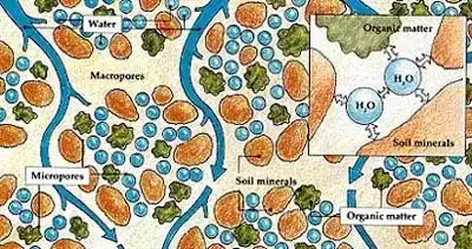
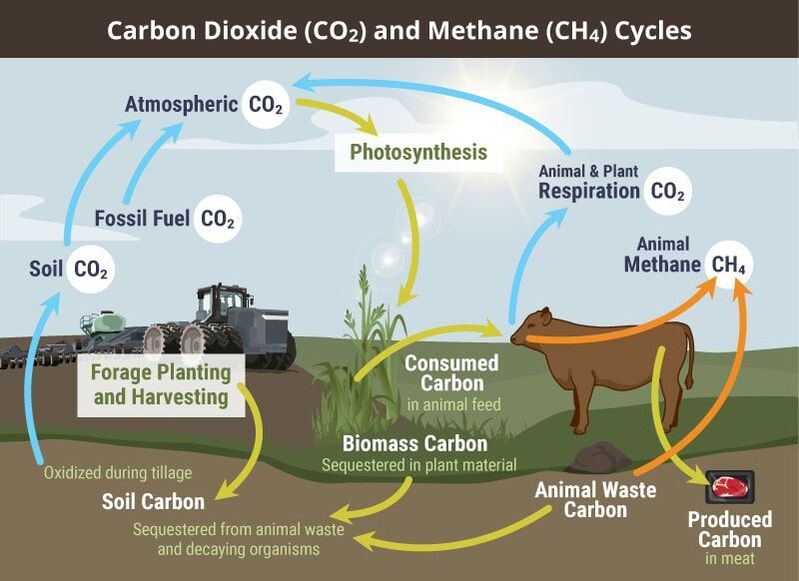
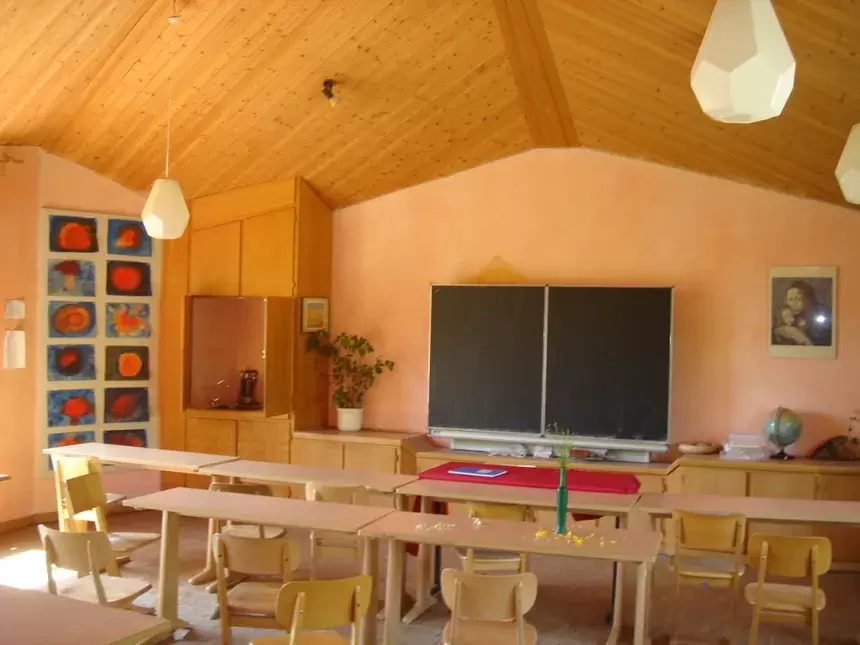

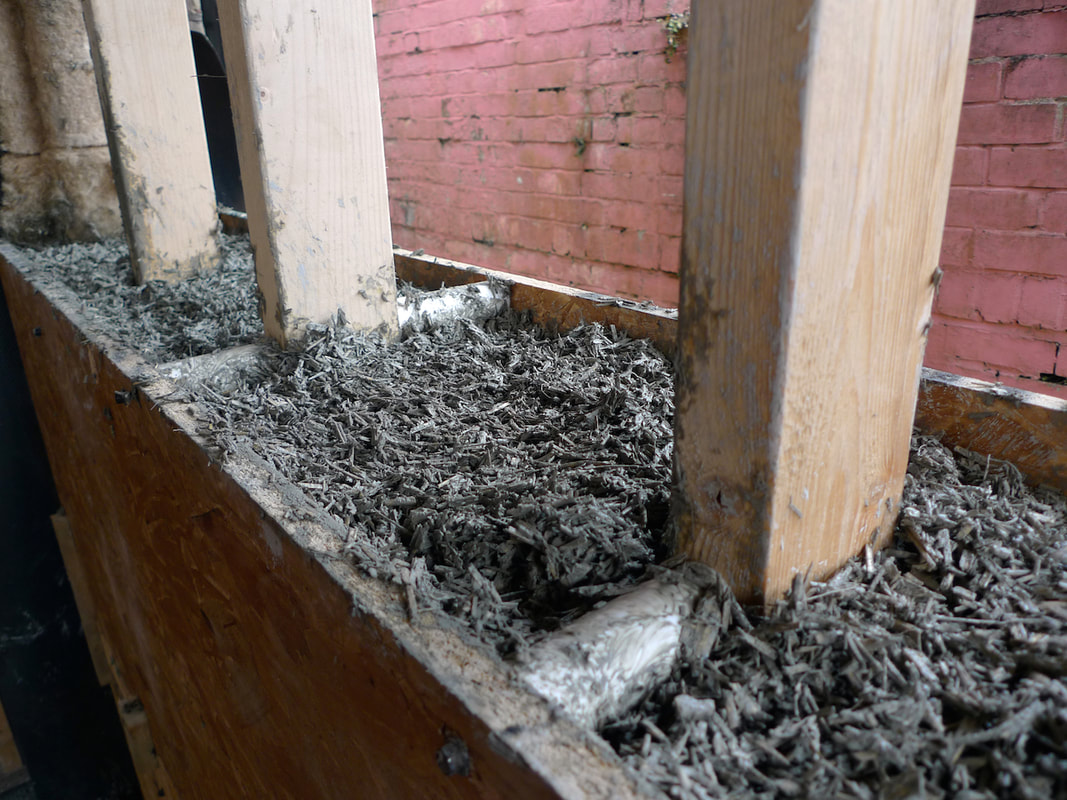
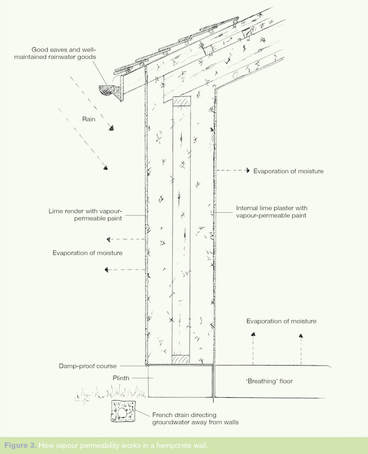
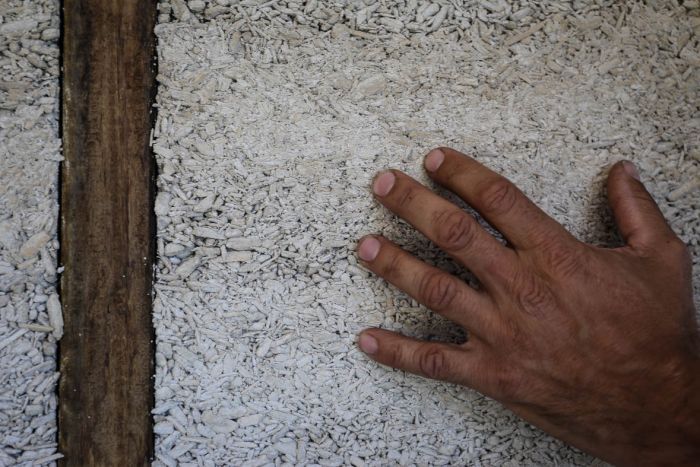
 RSS Feed
RSS Feed

